

We may earn revenue from the products available on this page and participate in affiliate programs. Learn More ›
The living room serves multiple purposes in most households, whether it be a gathering space, movie room, play area, or a sanctuary of rest and relaxation. The tough question for many homeowners is how to arrange the living room for their purposes while allowing the room’s features to really shine.
The key consideration for living room design is to ensure the setup works for entertaining as well as it does for everyday life, according to owner and president of Drury Design Gladys Schanstra. “I encourage [clients] to think about their audience and who they’re inviting to their homes,” Schanstra says. “This can be different from a space that’s more about the daily routines…it’s about figuring out a client’s specific combination of uses.”
If you’re looking to incorporate some inspired design into your home, we’ve rounded up several living room layout ideas that are both inviting and functional.
1. Sectional Sofa Layout

Sectionals are popular pieces of furniture, but they can pose some difficulties in arranging a living room. Consider placing the sectional in the middle of the room and placing items like a console table and ottoman around it to carve out an intentional area for conversation and lounging. An accent chair in a diagonal corner pairs nicely to round out the space.
2. TV Layouts
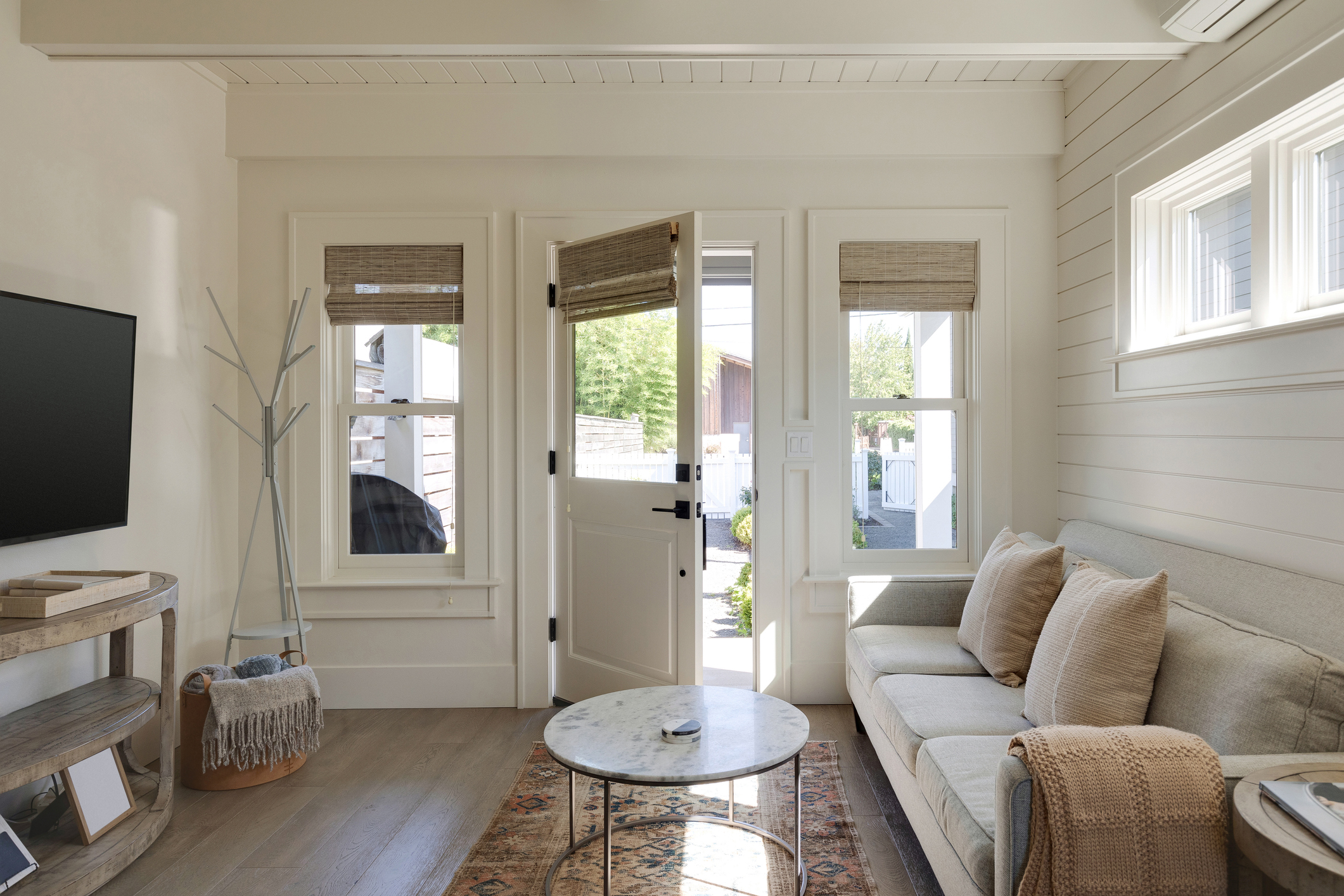
Whether or not TV should be shown off is a common dilemma, but there’s no doubt that TVs are frequently used items in many living rooms, dens, and family rooms. As a result, many choose to set up their living rooms with the TV at the center, as pictured here.
Not into the TV being the main focal point? “There are clever ways to conceal TVs there and reveal them when needed,” Schanstra says. One route is to purchase a TV that has an art display mode to disguise it as art. Another option is to place the TV inside a cabinet with doors off to the side. “This can be a part of a space-use mentality aimed at minimizing how much TV a family watches, or at least trying to ensure that TV viewing is more purposeful,” Schanstra says.
3. Twin Sofas
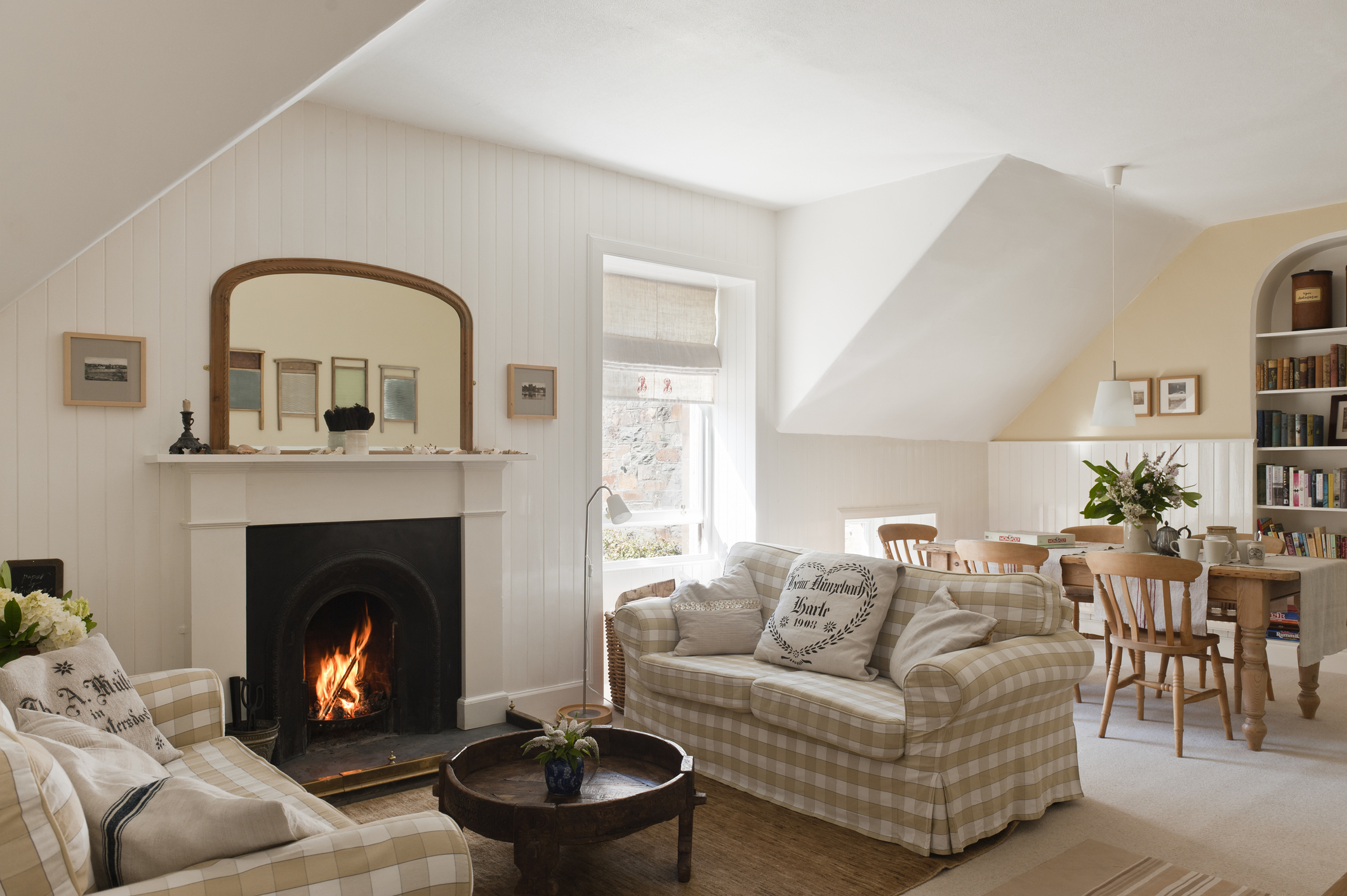
Twin sofas facing one another is another popular living room layout that has a more formal feel. This simple layout is pleasing to the eye thanks to the symmetry of the sofas. Just add a rug to ground the space and a coffee table, and it’s the perfect setup for socializing.
4. L-Shape Layout
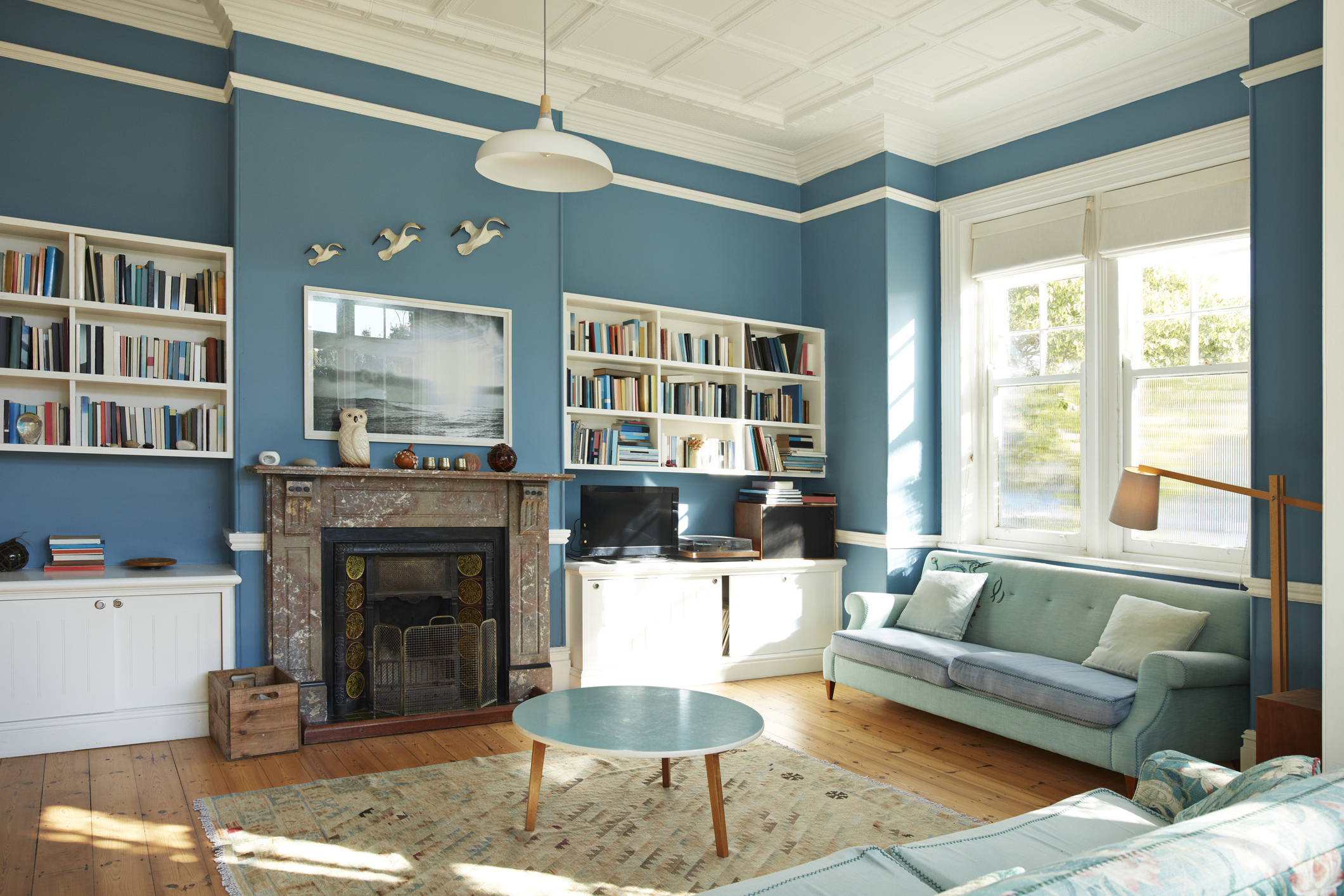
According to Schanstra, an L-shape layout is ideal for conversation instead of having guests face each other directly. “It’s very comfortable for seated guests to face each other in a diagonal, so often you’ll see an L-shaped piece, whether it’s a sectional or a sofa and two chairs, or two sofas on a 90-degree angle,” she says.
5. Floating Sofa
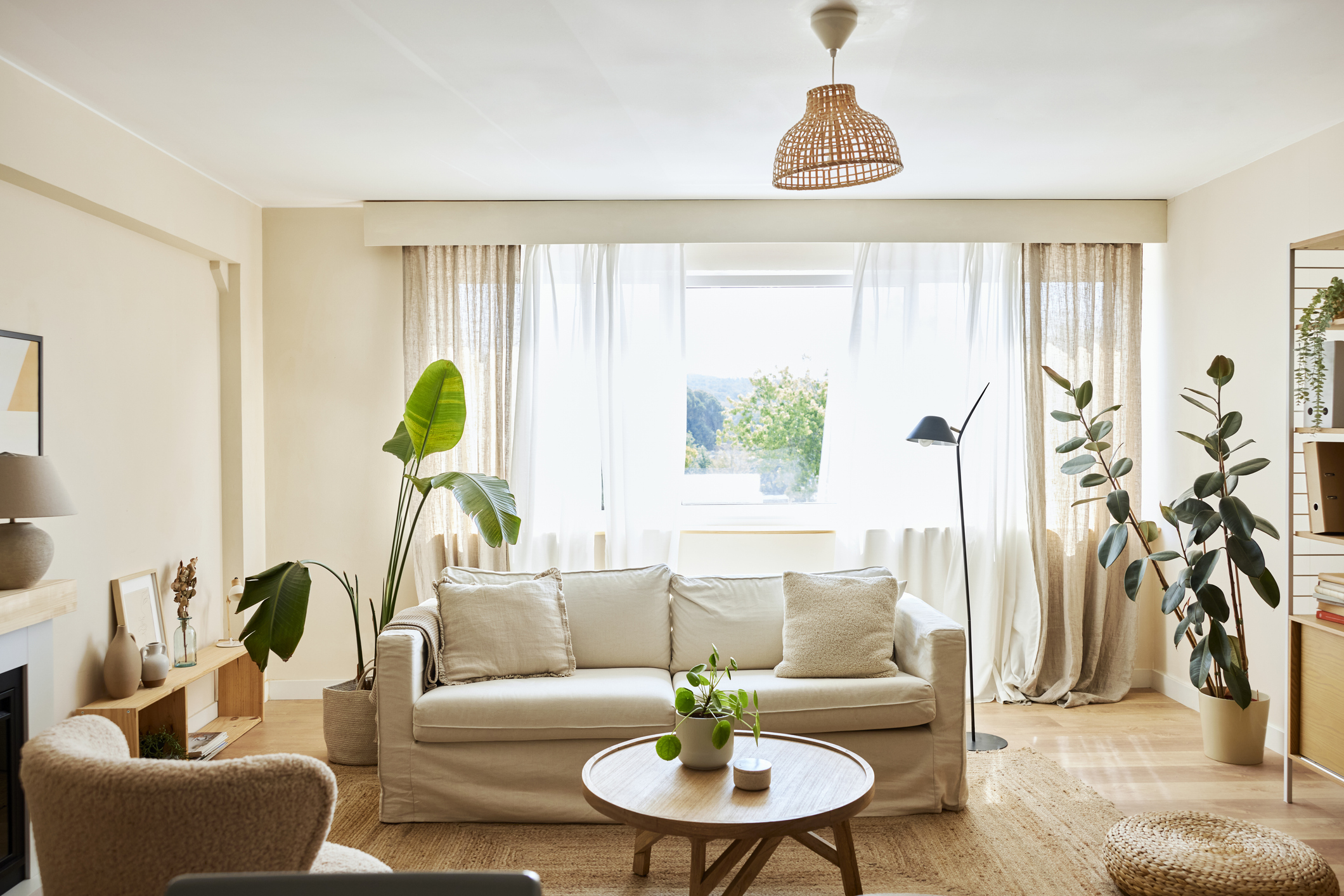
While placing a sofa against a wall may feel intuitive, Schanstra encourages clients to create areas of conversation based on furniture placement rather than room dimensions. “It feels more cohesive when the furniture defines the room versus the room defining the furniture,” she says. Seating placed closer together near the center of the room feels more natural than seating placed further away with vast space between furniture. Instead, make walkways and leave space behind furniture to make the seated experience more enjoyable.
6. Conversation Area
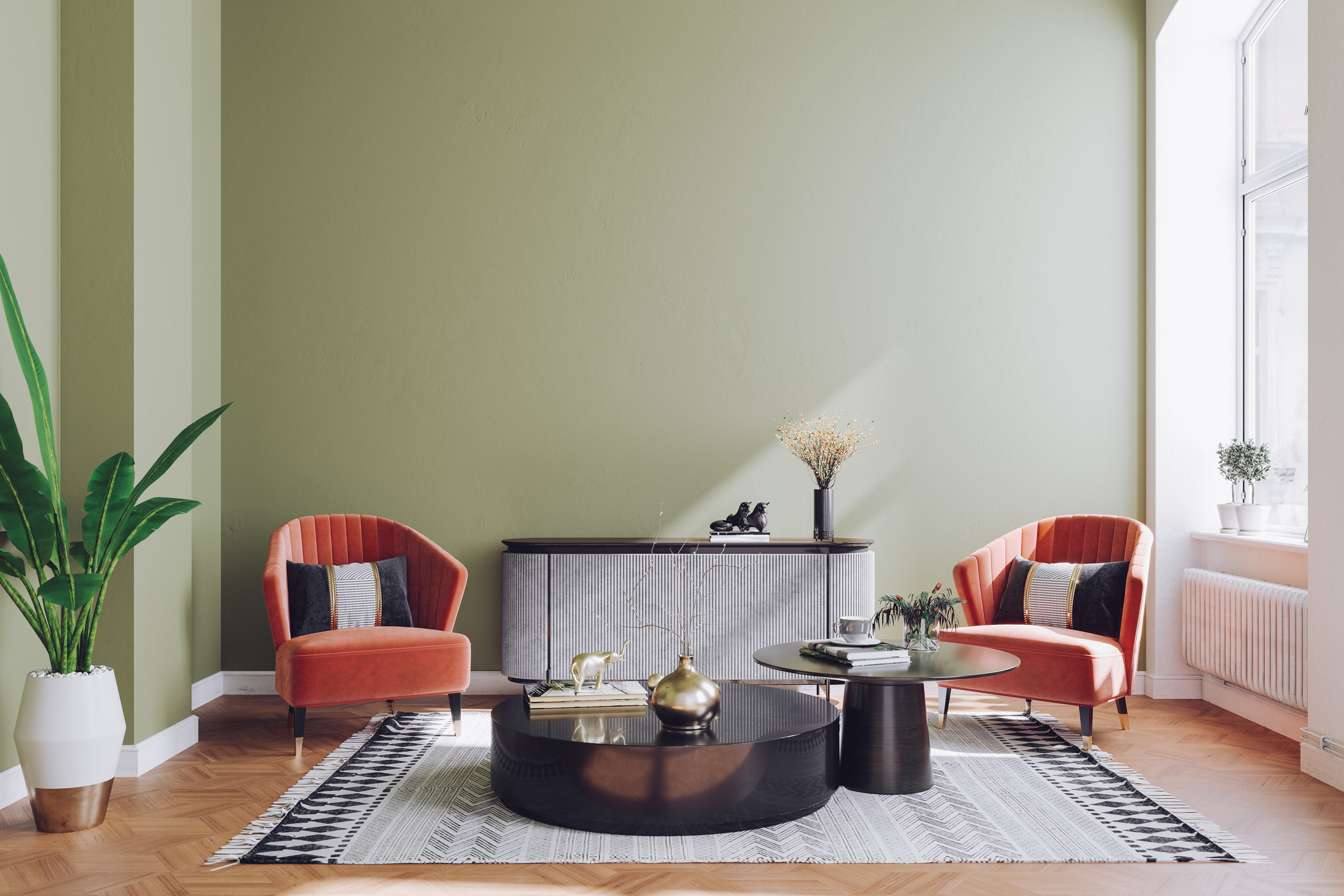
While sofas are common in living room designs, they’re not required. A simple setup with two armchairs and a coffee table makes for a perfect reading or conversation area. This living room layout is perfect for if you need small living room ideas or if there are multiple living spaces in the home, such as a tv room and family room.
7. Small Living Room
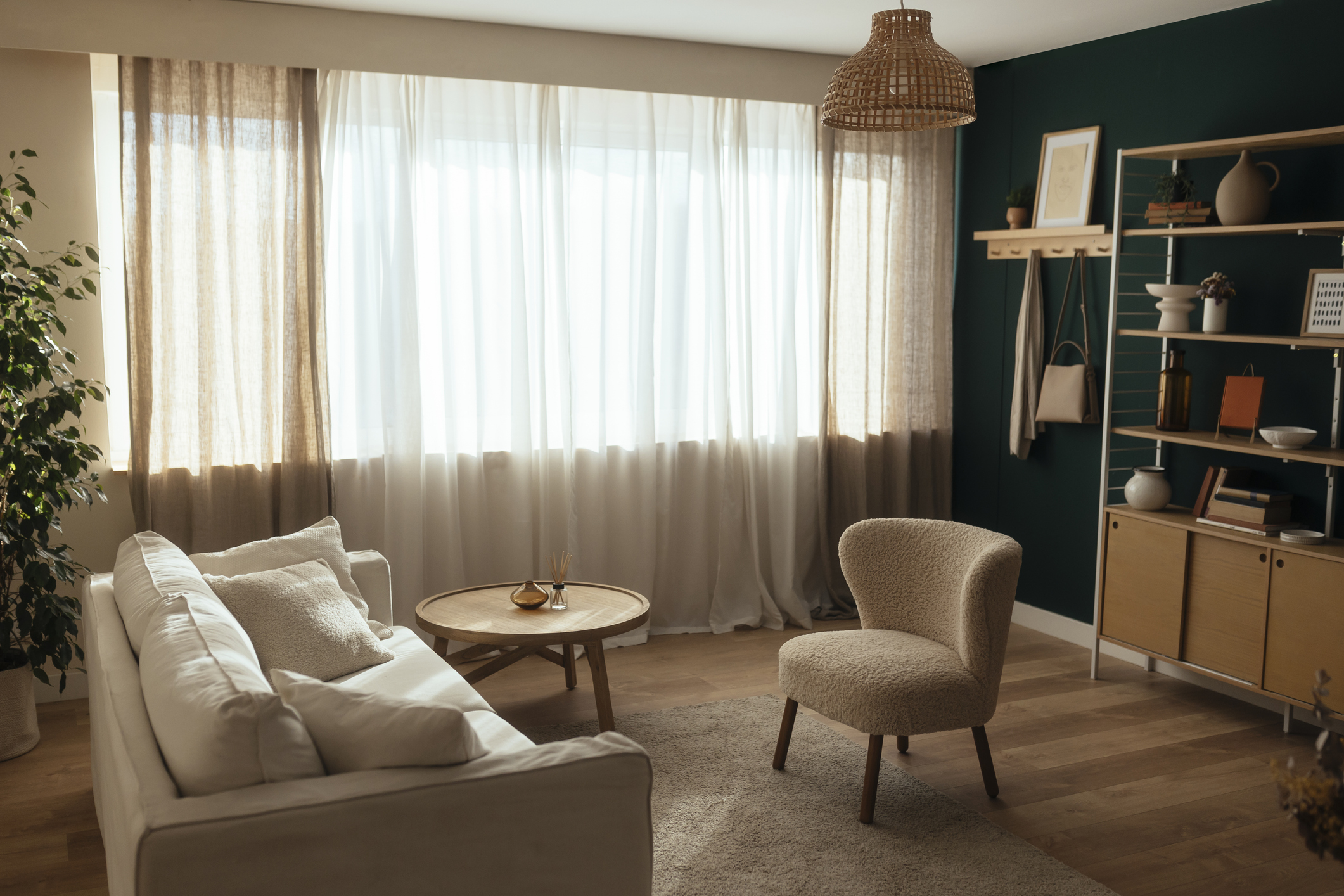
When it comes to small living rooms design, sometimes simple is best to optimize traffic flow. Here, a floating sofa creates separation for the living space and a rug, side table, and accent chair tie it all together. Schanstra says there are also paint tricks you can try in a small space to make the space seem larger, such as painting walls and ceilings all one light color. “You can also paint one particular wall a darker color to make it recede,” Schanstra says.
8. Fireplace Focal Point
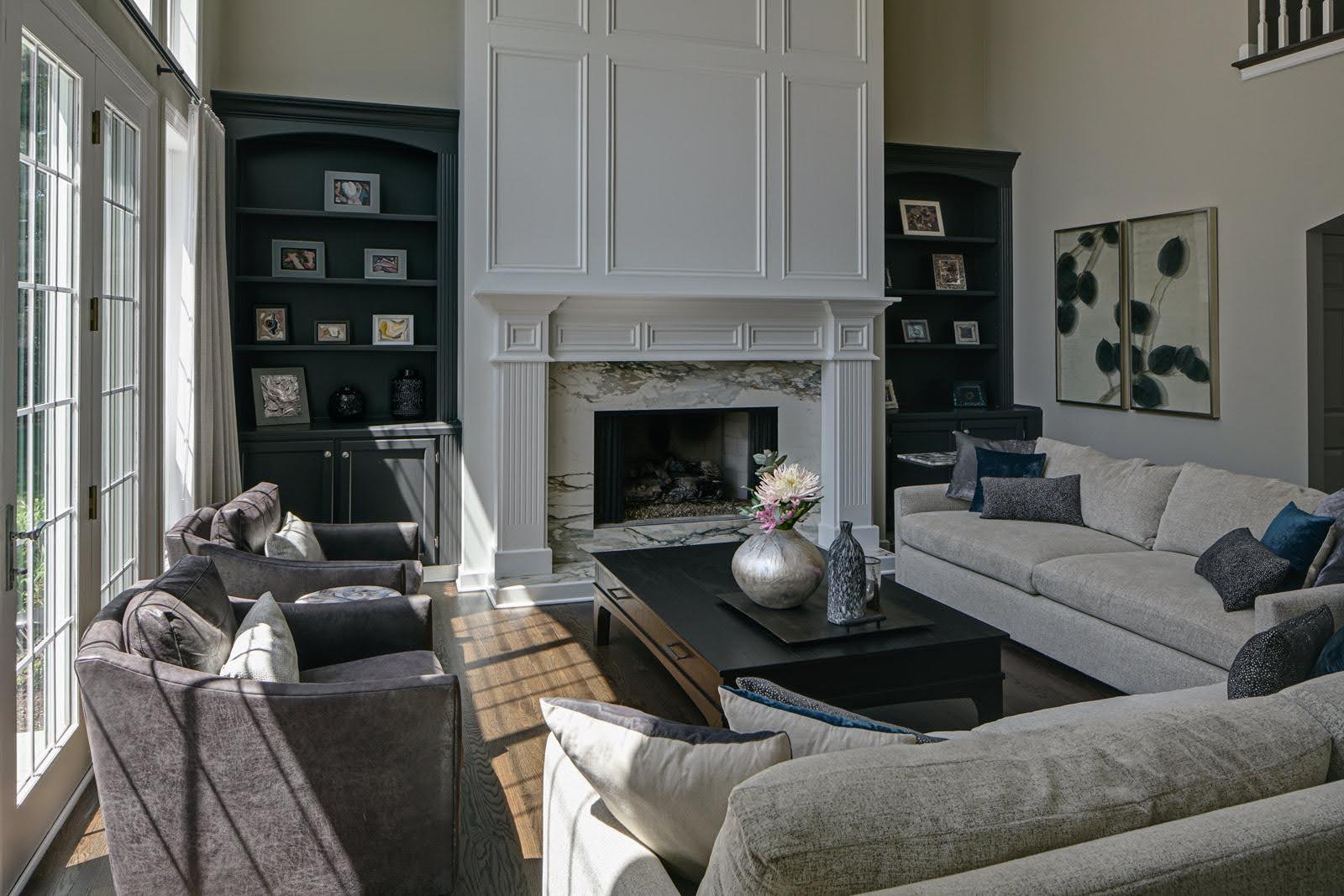
Fireplaces are a common focal point for living rooms and for good reason—conversations near the fire feel more intimate and cozy. Here, the furniture is positioned in a U-shape to provide ample seating and small side tables are positioned between arm chairs and sofas for additional surface space, a detail Schanstra says to not overlook. “Make sure there are areas where people can rest their things and whatnot,” she says. “That could be a coffee table or a console behind a seating area or a couple of side tables.”
9. Large Living Room
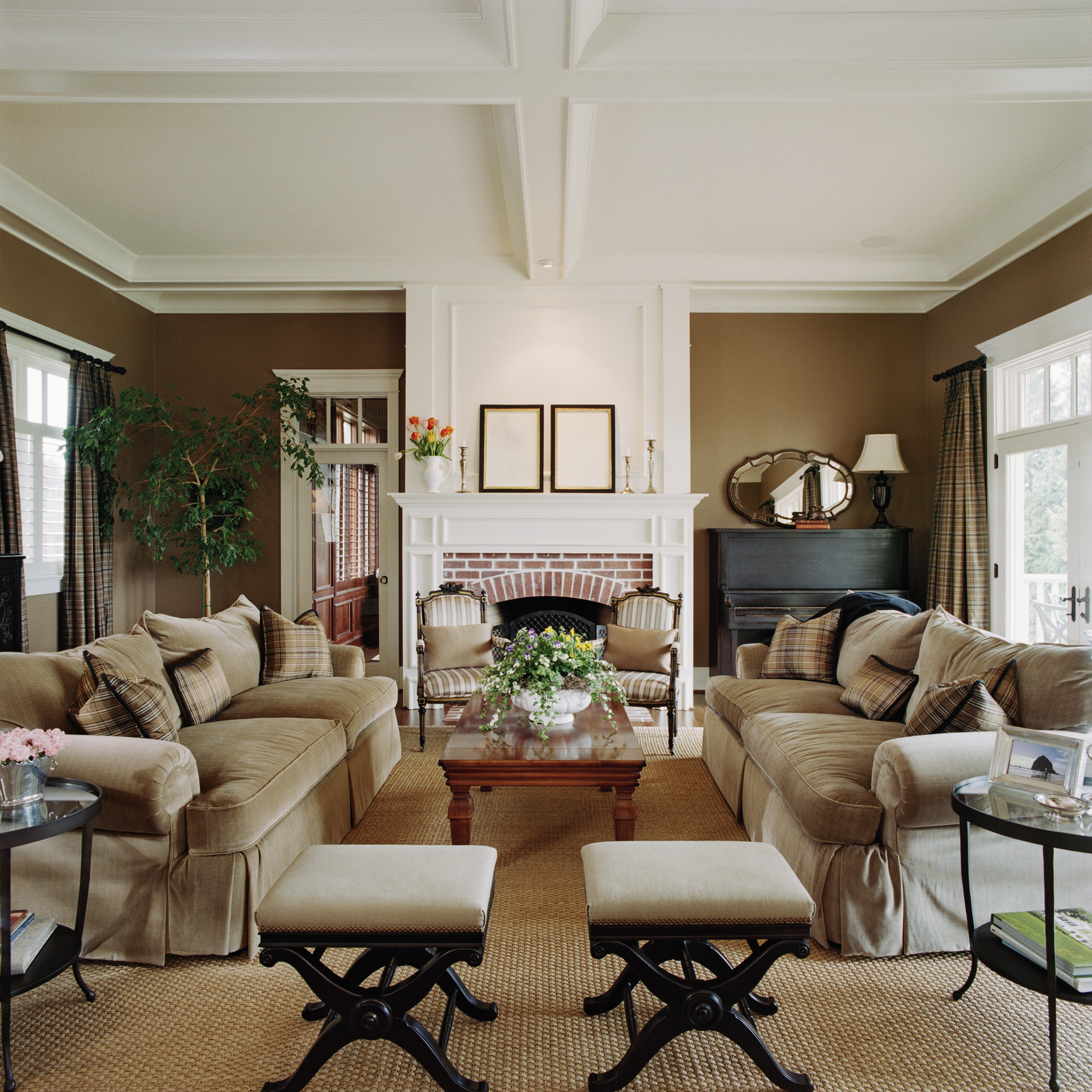
When looking for large living room arrangement ideas, try to prioritize symmetry so the layout feels intentional and balanced. Versatile pieces are also important in bigger spaces to keep the space interesting and functional for various different uses and guests. “Remember, when you entertain, not everybody is going to be sitting in that one space,” Schanstra says. “People tend to break off into smaller cozier groups and they love spaces that can accommodate that.”
10. Sofa and Matching Accent Chairs
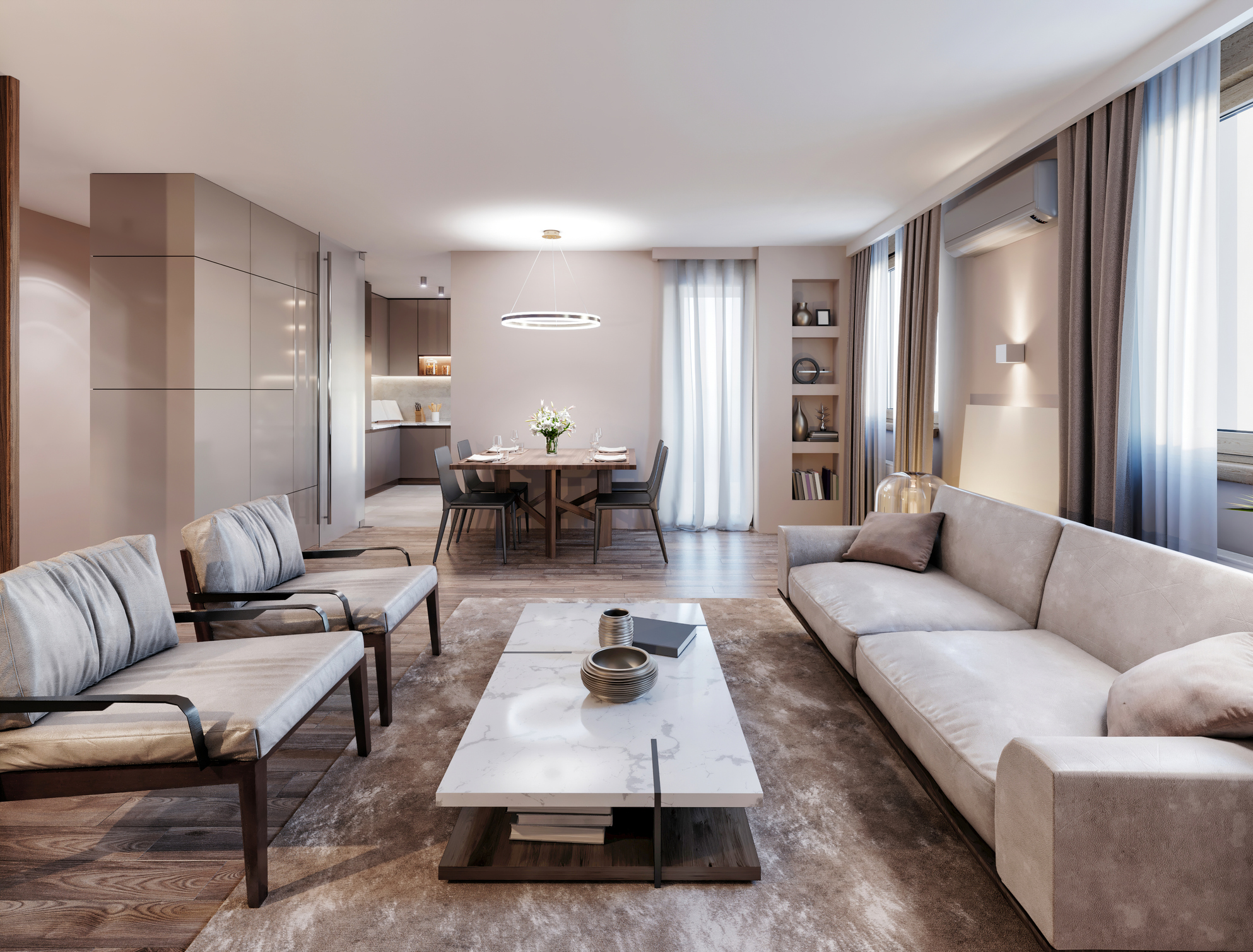
Similar to a twin sofa setup, this arrangement allows guests to directly face one another from a sofa or chair. This living room layout gives guests plenty of space to move around and use the coffee table to place drinks or books if needed. The open design also makes the room appear larger and is perfect for entertaining as guests mingle from the dining area to the living room.
11. Versatile Seating

A variety of seating options in your living room setup is visually interesting as well as functional. Anchor your layout with an area rug and place the different seating pieces around the edges of the rug. Items like ottomans and stools can easily be moved around and provide additional seating without weighing down the look and feel of the room.
12. Space to Play
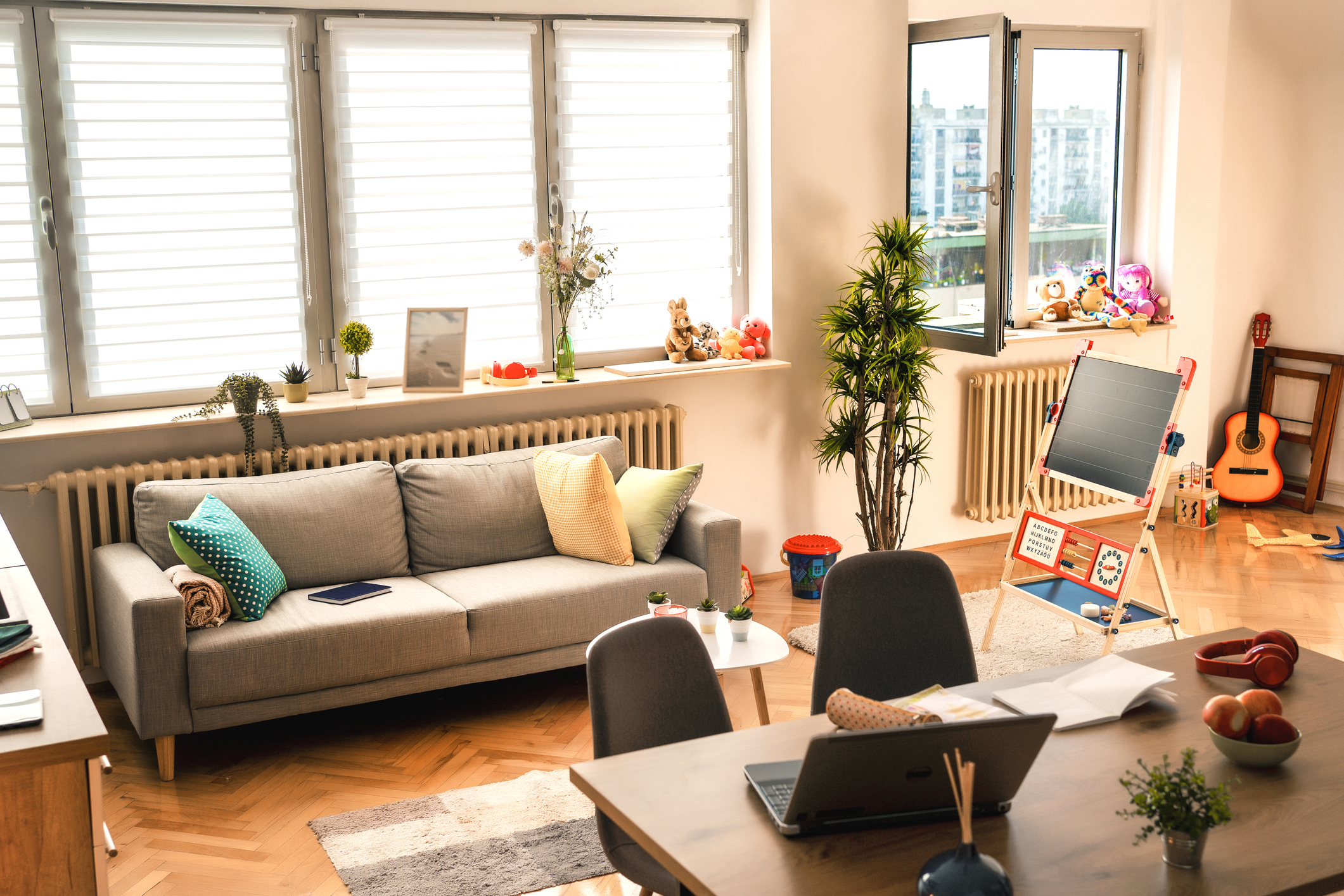
Design your home for how you actually live, not just what looks perfect. If you’re looking for family room ideas and layouts where your kids can play, create a dedicated section in the room for children’s toys and activities. Here, the living space is marked by a rug, console, and sofa. Another rug indicates a subtle separation for a dedicated play space on the other side of the room. The sofa placed along the wall makes the space feel larger and makes it easy to supervise kiddos in the play area.
13. Work Station
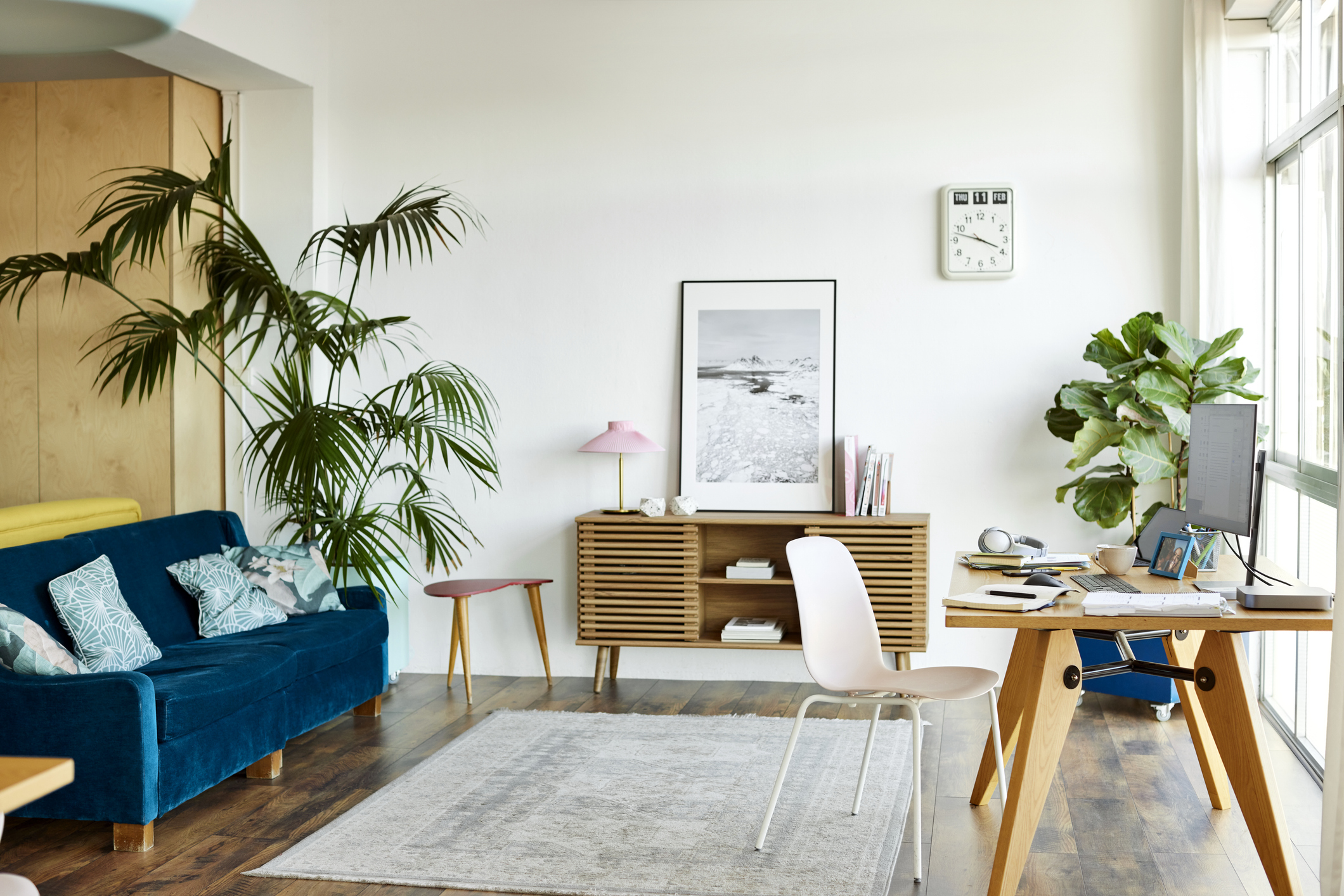
For living rooms that have to double as a home office and living space, create an arrangement where furniture can play double duty. For example, this office chair can double as a conversation chair after hours. However, it’s a good idea to have the desk face away from the rest of the living space, whether at a window or a wall, so it’s easier to focus while working.
